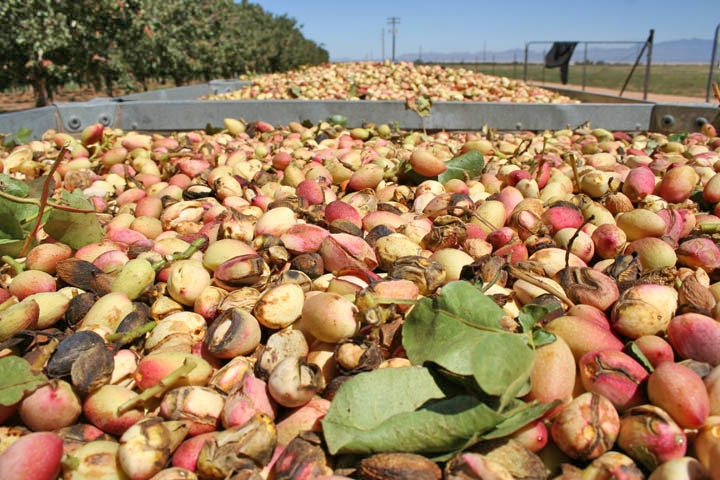
It may be an official off-year for California’s alternate-bearing pistachios trees, but the healthy looking trees now give Brian Blackwell reason to expect a good crop from his orchards.
Blackwell Farming Company, based in Bakersfield, Calif., grows pistachios in Kern, Kings, Madera and Tulare counties.
Blackwell made his comments in a recent issue of the subscription e-newsletter, Tree Nut Farm Press, sponsored by Cheminova.
Overall, production in California this year is expected to decline from last year’s record level. Still, Blackwell expects this to be a very good off-year for growers.”
“We had good chilling, a very pleasant spring, and all the heavy rains earlier have contributed to a good crop,” he says.
Many of his younger trees, six through eight years old, sported an early, prolific bloom this spring, but over time many of the berries started to shatter. He suspects the cause was a set too large for the trees to sustain.
If you would like to read more of Blackwell’s comments about the 2011 pistachio crop, go to http://enews.penton.com/enews/farmpress/treenutfarmpress/current where you can see the most recent issues of Tree Nut Farm Press and subscribe to the free enewsletter that is emailed twice monthly through the growing season. It is sponsored by Cheminova.
Almond hull split
There you will also read the comments of longtime PCA Sara Savary of Crop Care Associates about this year’s almond hull split.
Most of the orchards she scouts are in Madera County where this year’s nut crop looks good, even following a large nut drop in May. Given the number of newly-developing nuts on the tree then — probably more than they could sustain — Savary wasn’t surprised.
“The nuts look nice now and are sizing well,” she says.
Timely fungicide applications this spring have kept disease pressures low, she says. “Considering all the rain we had, I expected to see more disease. Although others probably put on more fungicide sprays that I did, most of our trees have had no late-season diseases, like rust or anthracnose. We let them go through the late rains without any treatments.”
Walnut crop outlook
By the official start of summer last month, the walnut orchards of PCA/CCA Rod Walker’s growers were looking much better than even a few weeks earlier.
His business, Professional Crop Consulting/Applied Bio Control, Waterford, Calif., works with walnut growers in Merced, Stanislaus, San Joaquin and Sacramento counties.
The turnabout followed the persistent and unusually cool, wet spring, which included about 1.25 inches of rain at the beginning of June.
“By the third week of June, temperatures had warmed up and the trees were looking good,” he says. “And, because the soils were finally drying a little, the trees were losing their yellow look and starting to get a new flush of growth”.
The cool spring weather helped depress walnut aphid numbers. Normally, he sees quite a few of the pests by the start of summer. He saw a few in the third week of June, including some parasitized by the small wasp, aphitus.
“It’s interesting that we had little or no walnut aphid activity up to that point,” Walker says. “Maybe they are just late in developing and will be coming later. If that happens, though, the population of natural predators, including aphitus and green lacewing, may be high enough by then to take out the aphids.”
Go to http://enews.penton.com/enews/farmpress/treenutfarmpress/current for the 2011 e-newsletter archives Tree Nut Farm Press and subscribe to the free enewsletter that is emailed twice monthly through the growing season.
About the Author(s)
You May Also Like




